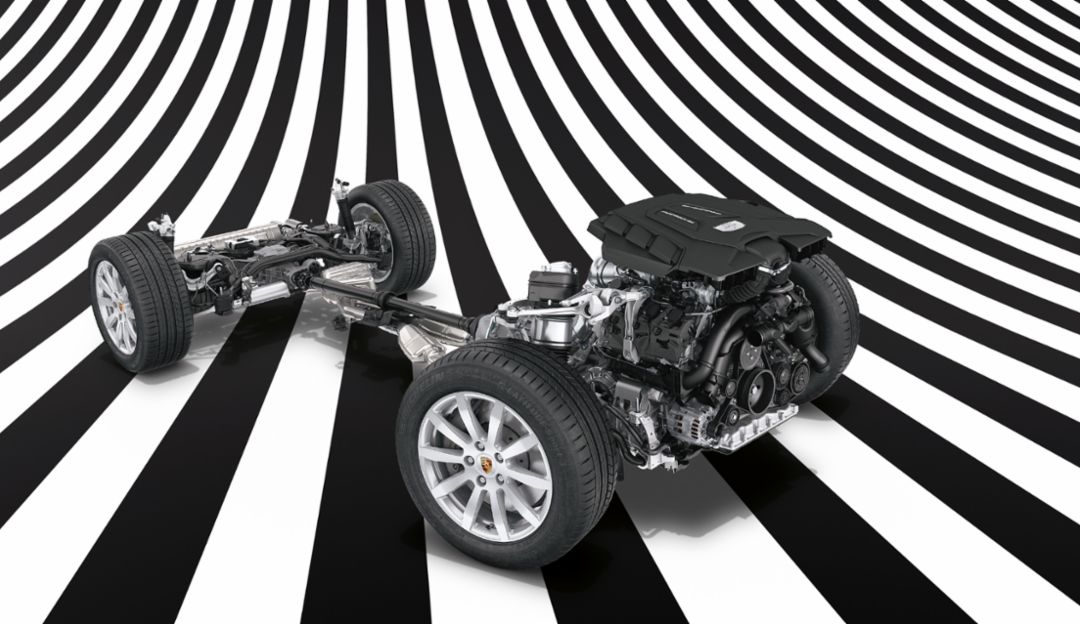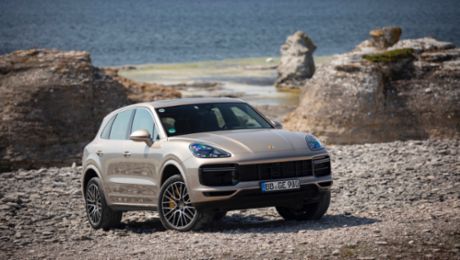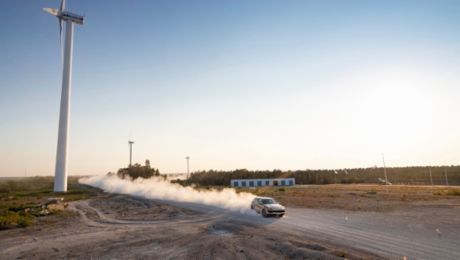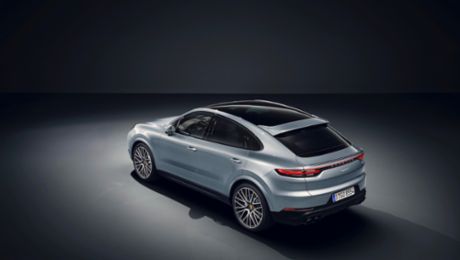A drive in the new Cayenne Turbo S E-Hybrid is breathtaking—with a system output of 500 kW (680 hp) (Cayenne Turbo S E-Hybrid: Fuel consumption combined 3.9 – 3.7 l/100 km; CO₂ emissions 90 – 85 g/km; electricity consumption (combined) 19.6 – 18.7 kWh/100 km) and a maximum system torque of 900 Nm, it accelerates from 0 to 100 kmh in 3.8 seconds, reaching a top speed of 295 kmh. But the SUV doesn't just show its abilities on straightaways. It’s extremely stable when cornering and steers agilely. Thanks to numerous adaptive systems, it adjusts to any driving situation and steadfastly holds its course when changing lanes. The Cayenne Turbo S E-Hybrid is capable not only of longitudinal but also lateral dynamics.
“We’ve bundled and perfected all of our previous experience in the new Cayenne.” Project Leader Suspension Model Line SUV
“We’ve bundled and perfected all of our previous experience in the new Cayenne,” says Karl Heeß, Project Leader Suspension Model Line SUV at Porsche. The interplay of the systems significantly increases the performance, driving safety, and comfort of the new Cayenne Turbo S E-Hybrid. Porsche Traction Management (PTM) adaptively controls the distribution of drive power between the front and rear axles according to the driving situation. The three-chamber air suspension can map various spring rates with a very wide spread, depending on whether you’re looking for greater comfort or a sportier driving mode. Porsche Active Suspension Management (PASM) continuously regulates the force of the shock absorbers for each wheel, based on road conditions and driving mode. Porsche Dynamic Chassis Control (PDCC) ensures that the SUV remains horizontal up to a lateral acceleration of 0.8 g when cornering. Porsche Torque Vectoring Plus (PTV Plus) supports steering with targeted braking interventions and provides improved traction when accelerating out of corners, thanks to its fully variable transverse lock. And Porsche 4D Chassis Control connects all of the chassis systems to one another and continuously calculates the optimum driving status information.
The twenty-one-inch wheels, which are standard equipment, support a dynamic driving style. The factory-fitted Porsche Ceramic Composite Brake (PCCB) ensures top braking performance for the most exacting requirements. One useful investment for even more agility and stability is the optional rear-axle steering. Not only does it reduce the turning circle from 12.1 to 11.5 meters by steering three degrees, it also steers the rear wheels up to 80 kmh in the opposite direction from the front axle for greater maneuverability and precision. When driving fast straight ahead, the rear-axle steering has a stabilizing effect, steering parallel to the front wheels up to the final speed, for example, when changing lanes on the freeway. The Cayenne’s front axle therefore doesn’t have to pull the rear axle around—it actively shapes the directional movement. As a result, the Cayenne is able to implement its high system power by combining combustion engine and electric motor safely and efficiently. And what’s the result of all this engineering? In a nutshell, Karl Heeß says, “When you drive the Cayenne Turbo S E-Hybrid, you think you're sitting in a classic sports car.”
45.5%
of the vehicle weight on the Cayenne Turbo S E-Hybrid rests on the rear axle. The distribution is even more balanced, which benefits the lateral dynamics.
245 to 162 mm
of ground clearance are offered by the three-chamber air suspension. In conjunction with Porsche Active Suspension Management (PASM), the hardness and height of the chassis are adapted to the ground and the situation.
Up to 0.8 g
of lateral acceleration and the resulting body roll are compensated for by the electromechanical Porsche Dynamic Chassis Control (PDCC).
11.5 meters
is the turning circle with rear-axle steering, as opposed to 12.1 meters without it. In addition, the combination with Porsche Torque Vectoring Plus (PTV Plus) provides even more agile steering and greater driving stability at high speeds.
50 %
is the weight savings on the brake disks thanks to Porsche Ceramic Composite Brakes (PCCB).
4D
Porsche 4D Chassis Control enables the chassis systems to act in concert and proactively in anticipation of the driving situation ahead.
Info
Text first published in the Porsche customer magazine Christophorus, No. 393.
Text by Thorsten Elbrigmann
Illustration by design hoch drei




